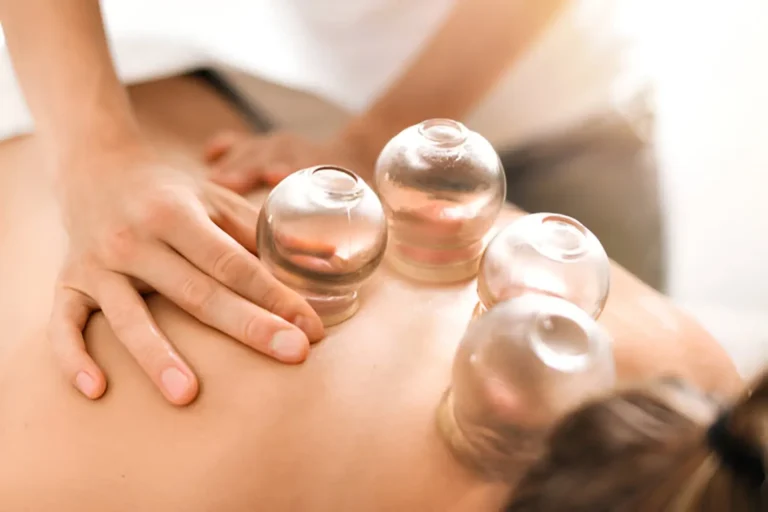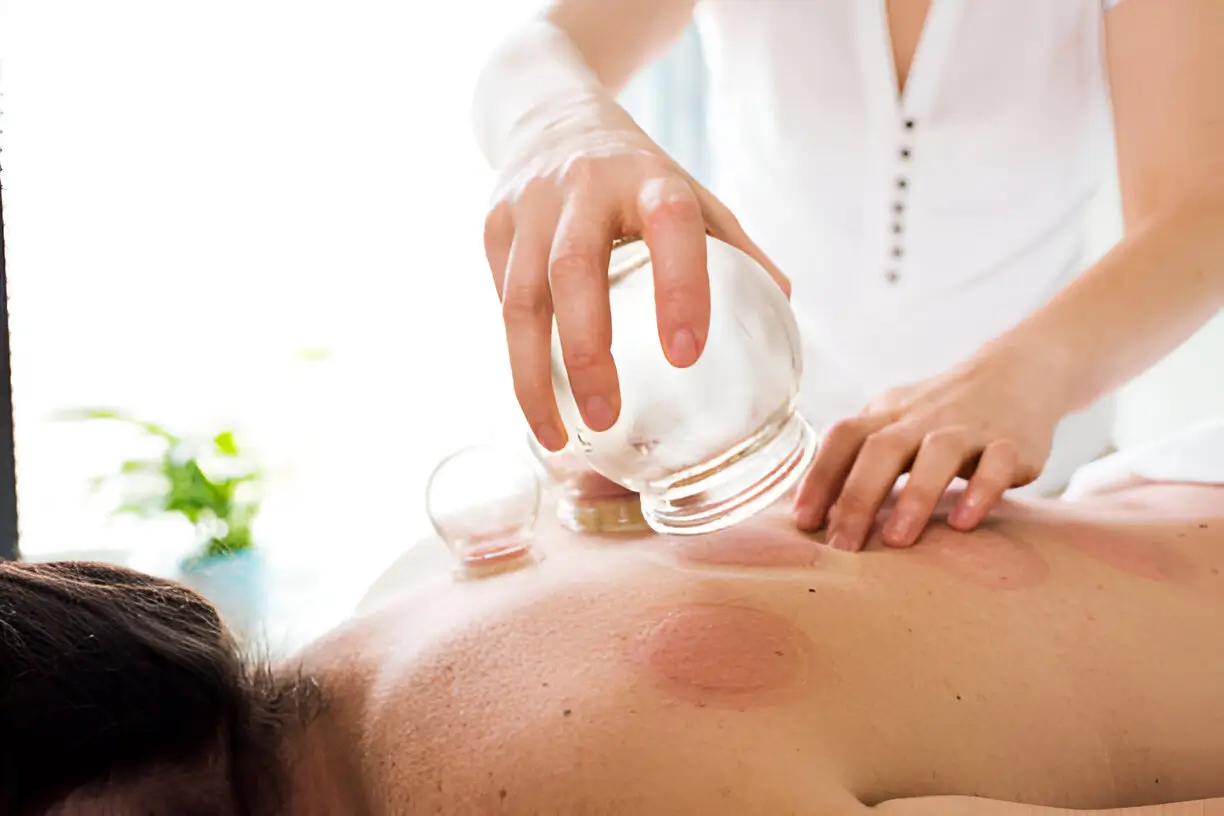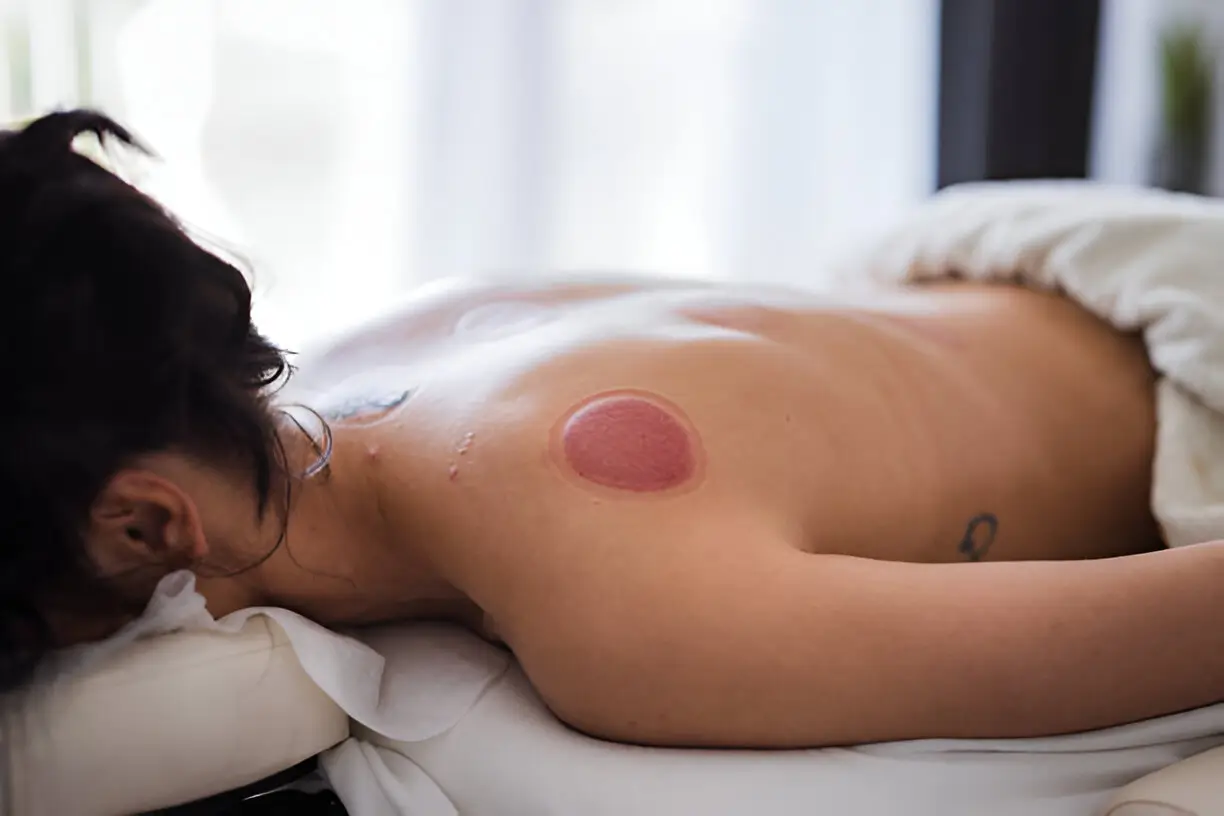How Does Cupping Help Athletes?
Cupping therapy is a viable option for athletes who want to return to activities faster and keep their bodies feeling strong. It works by gently pulling blood toward the skin’s surface. It helps bring more oxygen and nutrients to tired or sore muscles. This helps your body heal itself faster after intense workouts or sports activities.
It can help with muscle soreness and make it easier to move without unpleasant sensations. When done regularly and correctly, cupping may even help you move easier, which is useful for athletes and active individuals.
Cupping for athletes can also help clear out things like lactic acid that build up in muscles after exercise. If certain areas are overworked or inflamed, it can help with soreness. Because of all this, many athletes add cupping to their care routine, as it’s useful for healing, recovery, and just staying in shape.
Common Cupping Techniques in Sports
Athletes use different cupping methods to make recovery and performance better, such as:
- Dry Cupping (Static or Moving). This is the most common type. Cups made of glass, plastic, or silicone are placed on the skin, and air is removed to create suction – either by using heat or a small hand pump. If cupping is static, the cups stay in one spot for about 5 to 15 minutes. In moving cupping (also called massage cupping), the cups are slowly moved over the skin – usually with oil. Both static and moving cupping are great for soreness and recovery.
- Flash Cupping. During flash cupping, cups are quickly placed and then removed across the skin. The repeated suction helps stimulate blood circulation and ease muscle tension in a way that feels like a tapping massage. This technique is useful if your skin is too sensitive for cups to stay in place for longer periods.
- Wet Cupping (Hijama). This technique is more traditional and less common in sports therapy today. After creating suction, the skin is lightly scratched or pricked, and then the cup is placed back to draw out a small amount of blood. Some people believe it can remove toxins from skin and reduce inflammation. But it’s usually done in specific wellness or cultural settings. Though it’s not used as a standard recovery technique for athletes.
Top Benefits of Cupping for Athletes
Cupping therapy offers a lot of benefits that can support training and boost recovery for active individuals and athletes:
- Helps Blood Flow Better. Cupping pulls more fresh blood into your muscles, which helps your body heal faster and feel less sore after intense activities.
- Eases Muscle Tightness and Pain. If your muscles feel tight or achy, cupping can help relax them. That means less pain and easier movement.
- Easier Movement. Tight muscles can make it hard to move. Benefits of cupping for athletes can help your body relax so you can stretch and move easier.
- Faster Recovery. Cupping helps with inflammation, which means you can recover faster and get back to training sooner.
- Breaks Up Scar Tissue. Old injuries can leave behind tough spots that hurt. Cupping can help soften those areas and make them feel better.
- Works Well With Other Care. Cupping is even more helpful when used in conjunction with things like chiropractic care, massage, or rehab exercises. Just make sure it’s done by someone who knows what they’re doing.
What the Research Says
Scientific studies continue to show how cupping therapy may benefit athletes and boost their recovery:
- Cupping for Pain Relief and Recovery. One review looked at how effective cupping is for sports rehab.
- Muscle Fatigue Study. A study tested how cupping affects tired arm muscles during workouts. The results showed that people felt less fatigue right away and even 24 hours later.
- Dry Cupping and Athlete Recovery. Another study focused on how dry cupping helps athletes during training. It showed improvements in things like recovery speed and sleep quality.
- A Systematic Review of Cupping in Sports. This review summed up many cupping studies from different sports. It found that cupping may help with pain relief and faster recovery.
- Wet vs. Dry Cupping for Endurance. This study compared both styles of cupping. It found that both can help people feel better.
Safety, Side Effects & Contraindications
Cupping therapy is safe when done by a trained professional. But like any type of treatment, it isn’t perfect for everyone.
The most common thing people notice after a session is the round marks or bruises where the cups were placed. These aren’t dangerous and usually fade after a few days. Skin might feel sore or a little tender where the cups were. Some people might feel a bit dizzy right after the session, especially if it’s their first time.
In rare cases, people can get small blisters, burns (if fire cupping is used), or even an infection if the equipment isn’t cleaned right. That’s why it’s important to go to someone who knows what they’re doing.
But cupping isn’t a good idea for everyone. It might not be safe for people with bleeding issues, serious skin conditions, open wounds, or certain medical problems. It’s also not recommended for pregnant women unless a doctor says it’s okay. If you’re not sure, talk to your doctor or a licensed healthcare provider first.
Integrating Cupping Into Your Training
If you’re thinking about trying cupping as part of your training, it’s a good idea to talk to someone experienced in cupping – like a chiropractor, physical therapist, or recovery coach.
Most people get cupping done on days when they’re not training hard, or right after a tough workout to help with recovery. If you’re getting ready for a big event or training really hard, your provider might suggest doing it more often or on specific days that fit your schedule.
Cupping works best when it’s part of a bigger recovery plan, which may include other treatments like acupuncture, massage therapy, physical therapy, and others. That means staying active, stretching, eating well, sleeping enough, and drinking plenty of water. And if you notice anything strange with your skin or feel weird after a session, always tell your practitioner.
Conclusion
Cupping therapy is a simple and natural way to help your body feel better, especially if you’re active and dealing with soreness after workouts. It can boost blood flow, relax tight muscles, and make it easier to move.
When done by a trained professional, it’s safe and easy to add to your routine. Are you sore from workouts, dealing with an old injury, or just trying to stay in shape? Cupping can be a viable option. Just make sure to listen to your body and work with someone who knows how to use cupping properly and safely.
Read also:
- Sports Acupuncture for Athletes: Boosting Performance and Recovery
- What is Facial Rejuvenation Acupuncture and How Does it Work
- What is Chinese Herbal Medicine and What Would You Want to Know About It
-
Marina Doktorman, M.S., L.Ac., is an experienced acupuncturist who obtained her Masters of Acupuncture from the Tri-State College of Acupuncture in New York City in 2001. During her studies, she focused on Chinese Herbology, a branch of Traditional Chinese Medicine (TCM) that utilizes herbs to complement acupuncture treatments. Marina is licensed in both New York (NY) and New Jersey (NJ) and holds a Diplomate of Acupuncture from the National Certification Commission for Acupuncture and Oriental Medicine (NCCAOM), indicating her expertise in the field.







